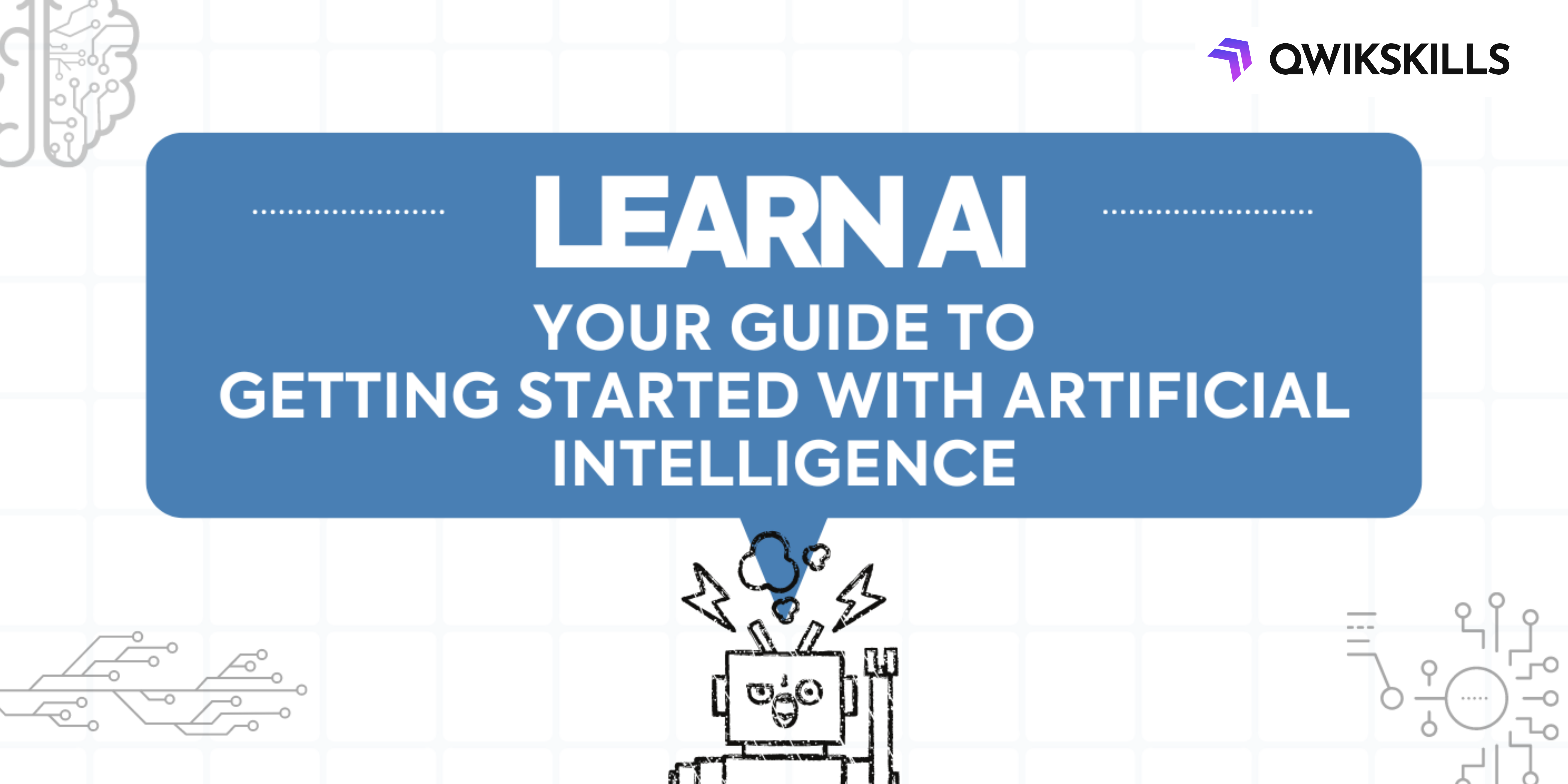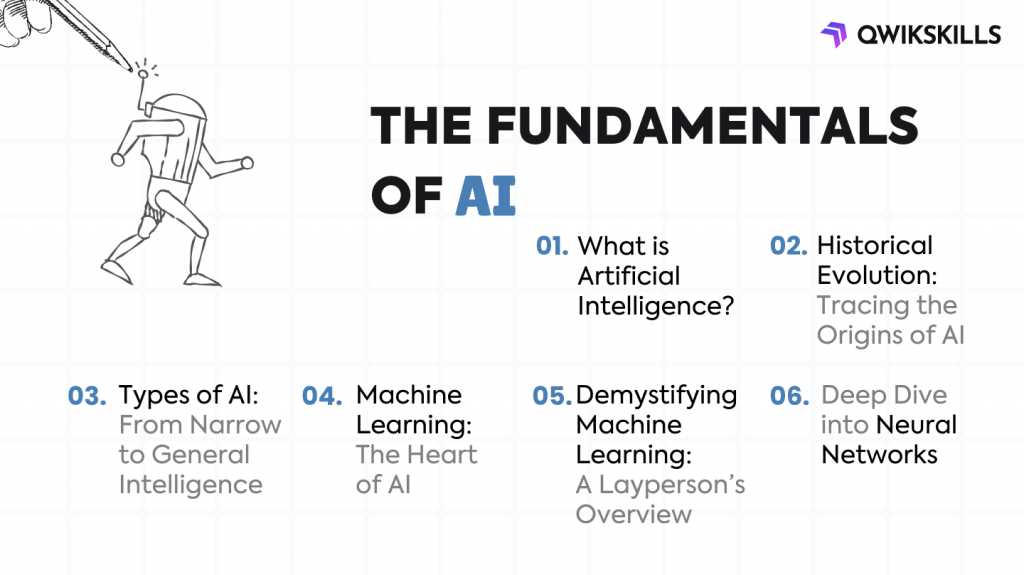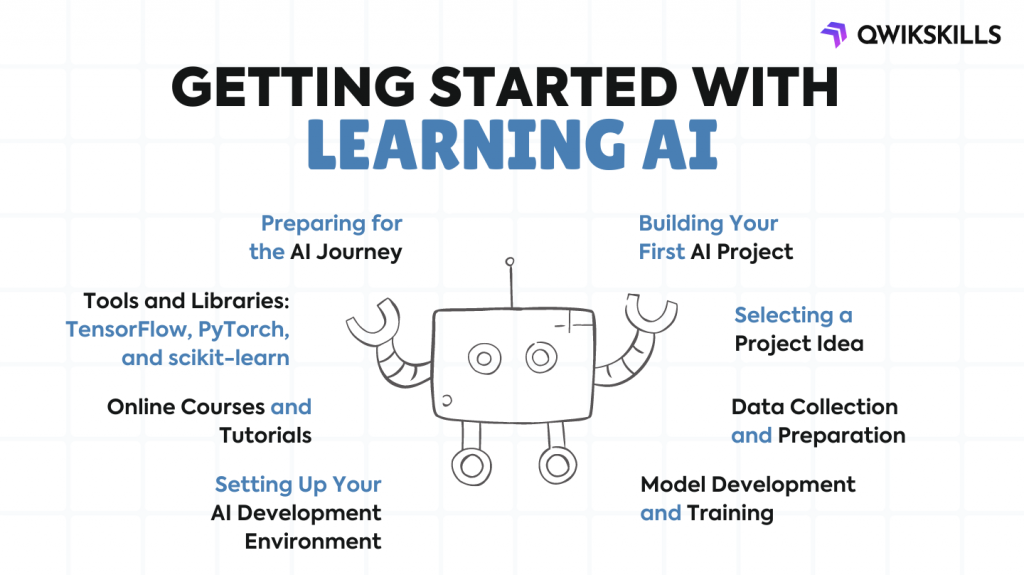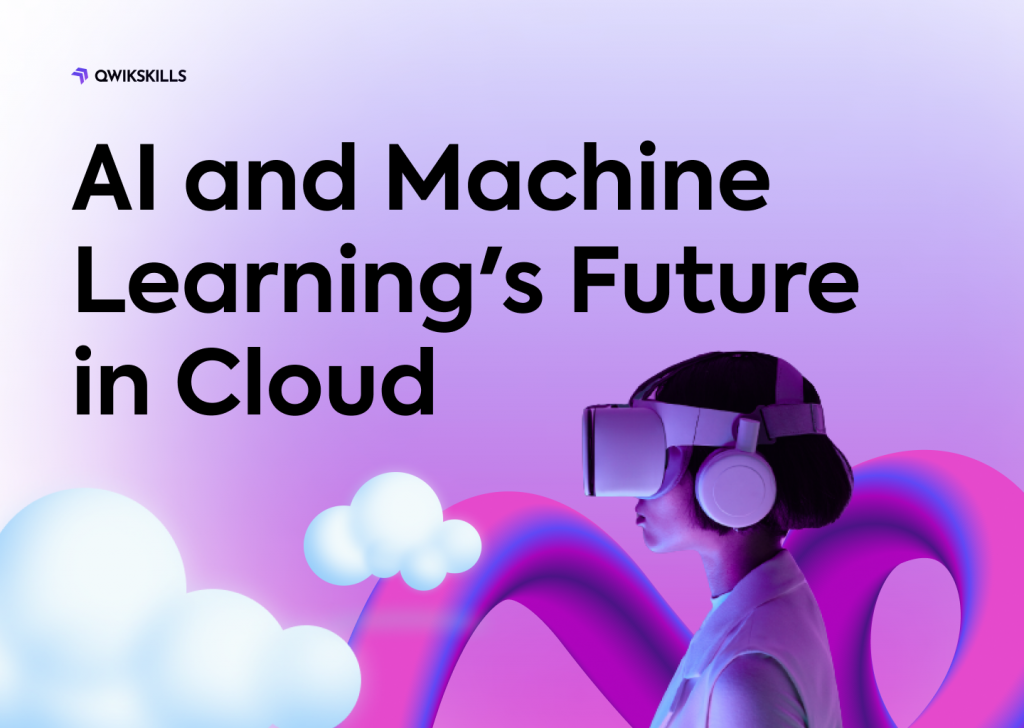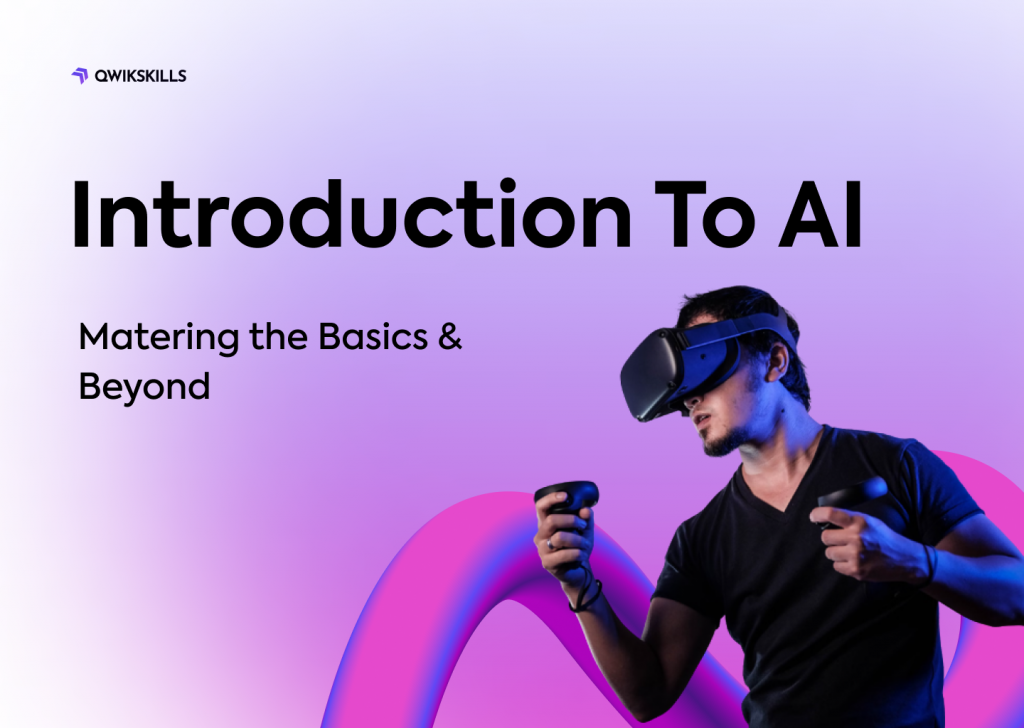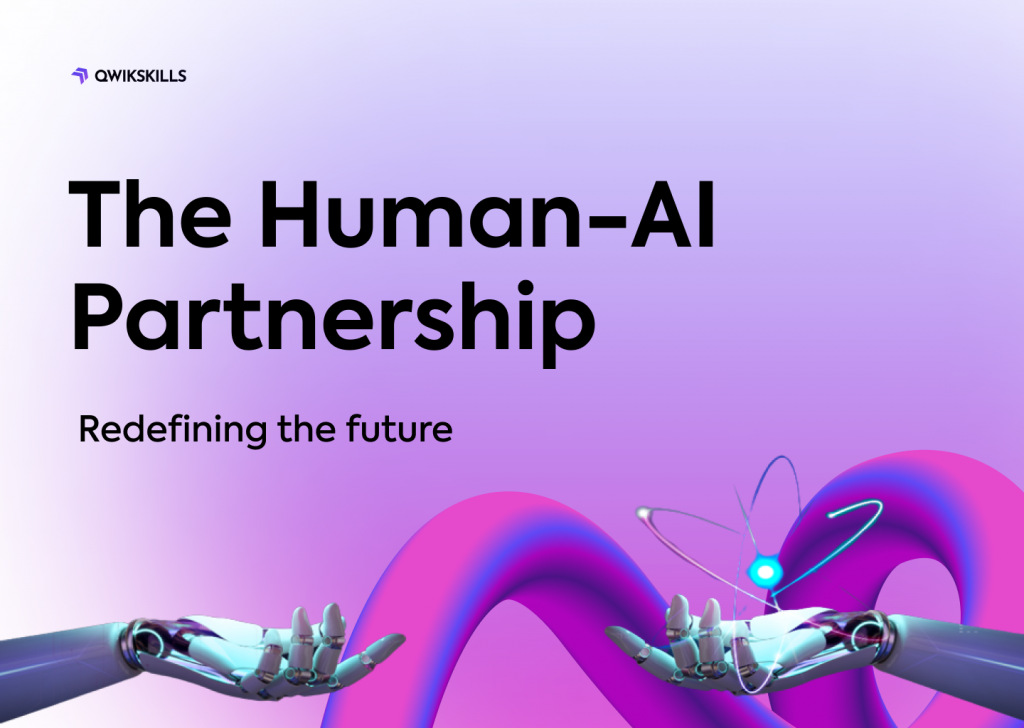Welcome to the world of Artificial Intelligence (AI), where machines mimic human intelligence to perform tasks that once seemed reserved only for human minds. From self-driving cars to personalized recommendations on streaming platforms, AI is shaping our lives in remarkable ways. In this guide, we’ll take you on a journey to demystify and learn AI Essentials, explore its fundamentals, and provide you with the tools and knowledge you need to dive into this exciting field.
Setting the Stage: Understanding the Power of Artificial Intelligence
Defining AI: Unveiling the Concept and Its Significance
At its core, Artificial Intelligence refers to the ability of machines to simulate human intelligence. This includes tasks such as problem-solving, learning, decision-making, and language understanding. AI has evolved from a sci-fi fantasy to a tangible reality, revolutionizing industries like healthcare, finance, and entertainment.
Navigating the AI Landscape: From Machine Learning to Deep Learning
Machine Learning (ML) is a subset of AI that empowers machines to learn from data and improve their performance over time. Within ML, Deep Learning (DL) takes center stage, leveraging neural networks to mimic the human brain’s functioning. This hierarchy of layers allows AI models to process complex data and make informed decisions.
The Fundamentals of AI
What is Artificial Intelligence?
At its core, AI enables machines to think, learn, and solve problems like humans. It involves designing algorithms that allow computers to process data, identify patterns, and make decisions. By learning from vast amounts of data, AI models become more accurate and capable over time.
Historical Evolution: Tracing the Origins of AI
The roots of AI trace back to the 1950s when pioneers like Alan Turing and John McCarthy laid the groundwork. However, progress was slow due to limited computing power. As technology advanced, AI experienced breakthroughs, leading to the creation of AI-driven systems we encounter today.
Types of AI: From Narrow to General Intelligence
AI can be categorized into Narrow AI and General AI. Narrow AI excels at specific tasks, like facial recognition or language translation. General AI, still a theoretical concept, would possess human-like intelligence and adaptability across various tasks.
Machine Learning: The Heart of AI
Machine Learning is a crucial component of AI, enabling systems to learn from data and improve their performance. It comprises supervised, unsupervised, and reinforcement learning.
Demystifying Machine Learning: A Layperson’s Overview
Imagine teaching a child to differentiate between animals. In Supervised Learning, you show labeled examples (images with labels) to the algorithm, allowing it to learn patterns. Unsupervised Learning involves letting the algorithm find patterns in data without labels. Reinforcement Learning is akin to teaching a dog tricks, rewarding correct actions and correcting mistakes.
Deep Dive into Neural Networks
Inspired by the human brain, Neural Networks consist of interconnected layers that process data. The Input Layer receives data, the Hidden Layers process it, and the Output Layer produces results. Convolutional Neural Networks (CNNs) excel in image analysis, while Recurrent Neural Networks (RNNs) excel in sequence-based tasks.
Getting Started with Learning AI
Preparing for the AI Journey
Mathematics and programming are essential for AI. Linear algebra, calculus, and probability provide the foundation for algorithms. Python is the go-to programming language for AI due to its versatility and extensive libraries.
Tools and Libraries: TensorFlow, PyTorch, and scikit-learn
Frameworks like TensorFlow and PyTorch simplify AI model development. scikit-learn offers tools for classical ML algorithms. These frameworks provide pre-built functions and structures, making AI development more efficient.
Online Courses and Tutorials
To embark on your AI journey, online courses and tutorials are invaluable. Platforms like Coursera, edX, and Khan Academy offer courses ranging from beginner to advanced levels. YouTube hosts experts who share insights and tutorials, democratizing AI education.
Setting Up Your AI Development Environment
Anaconda simplifies package management, essential for managing libraries and dependencies. Jupyter Notebooks provide an interactive coding environment, facilitating experimentation. Cloud services like AWS, Google Cloud, and Microsoft Azure offer scalable resources for AI projects.
Building Your First AI Project
Selecting a Project Idea
Start with beginner-friendly projects like image classification or sentiment analysis. Intermediate projects include chatbots and predictive analytics. For those seeking challenges, delve into autonomous vehicles or natural language generation.
Data Collection and Preparation
AI thrives on data. Source datasets from public repositories or APIs. Data preprocessing involves cleaning, transforming, and engineering features. Avoid bias by ensuring diverse and representative datasets.
Model Development and Training
Choose the right algorithm based on your project’s needs. Decision trees are interpretable, neural networks are versatile, and Support Vector Machines (SVM) are great for classification. Hyperparameter tuning optimizes model performance. Split your dataset into training and validation sets to assess your model’s performance.
Navigating AI Ethics and Challenges
Ethical Considerations in AI
AI introduces ethical challenges such as bias and fairness. Ensuring AI systems are transparent and accountable is crucial. Privacy concerns must also be addressed to protect user data while benefiting from AI’s insights.
Future Trends and Challenges
Explainable AI (XAI) aims to make AI’s decision-making understandable, enhancing trust. In healthcare, AI assists in diagnostics and personalized treatment plans. While AI might transform job markets, it also creates new opportunities for skill development.
Conclusion
Reflecting on Your AI Journey: From Novice to Enthusiast
As you conclude your journey through this guide, remember that AI is a dynamic field that requires continuous learning. Stay updated with the evolving landscape, and consider how AI can reshape industries, inspire innovation, and make a positive impact on society.
Learn AI? Explore QwikSkills for expert-led AI courses. From beginners to enthusiasts, discover comprehensive content that empowers you to create, innovate, and excel in the dynamic field of Artificial Intelligence. Start your AI journey today!

